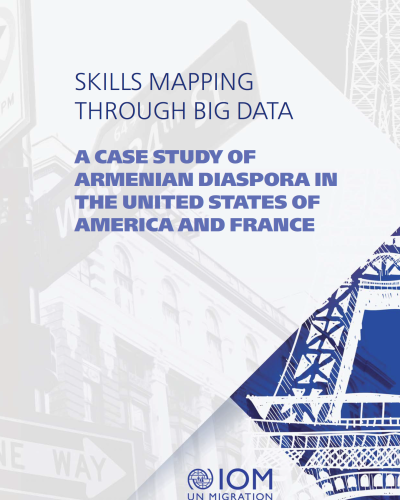Skills Mapping through Big Data

In 2016, a full-page call to action appeared in the New York Times targeted to the Armenian Diaspora. Co-signed by prominent billionaires, cultural figures, academics and NGO-leaders, the open letter outlined the need for sustained engagement in Armenian development and affairs (Sanamyan, 2016). Entitled “The Future for Global Armenians is Now”, it called for engagement characterized by partnership and coordination, for inclusive,
collective action leveraging the pooled resources of the diaspora.
The letter puts into focus several key issues plaguing diaspora organizations and initiatives and hoped to punctuate a turning point in diaspora involvement in Armenia. Despite a large, relatively wealthy, and highly skilled diaspora, heavily involved in homeland affairs, impact to date has been underwhelming. Major criticisms of the field are that the diaspora is at times fatally fractured, reactive, and too focused on immediate outcome to achieve long-term impact. Some have described a welfare diaspora-State relationship characterized primarily by philanthropy directed at “feel-good” or patriotic initiatives. Consensus within the diaspora is rare, but most agree that resources are inefficiently deployed and utilized.
Diaspora Armenians primarily live in highly educated, wealthy and developed countries such as the United States, Canada, France and the Russian Federation with higher standards of living than their counterparts in the Republic of Armenia. Despite the establishment in many cases of Armenian communities centuries ago, diaspora maintain strong connections and linkages to the contemporary Republic of Armenia, returning often for cultural and familial
visits, organizing Armenian groups and clubs at home, participating in fundraising efforts and facilitating transnational business ties. Given the highly engaged, educated and relatively wealthy nature of the diaspora, the sluggish development path of Armenia relative to States with comparable diaspora interest and engagement (such as Israel, India, Ireland, etc.) is a great priority.
This study investigates the knowledge potential of the Armenian diaspora and how it might be better visualized, understood, and utilized. It works toward this effort by first understanding the composition of the overseas knowledge bank. To that end, it aims to provide a snapshot of the skills, education, and professional positions of diaspora to better understand how and where they might contribute to development of the knowledge economy
in Armenia. This data may then be used to examine areas where Armenia’s diaspora might stimulate economic growth through transfusions of knowledge and skills, taking as best practices the experience of global knowledge-remitting diasporas.





